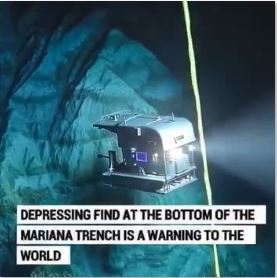
For many years, the Mariana Trench — the deepest point in the ocean — was thought to be untouched by human influence. That belief changed when scientists discovered a single plastic bag resting on its seafloor. This quiet yet powerful discovery sent a clear message: even the most remote corners of our planet bear the marks of human activity. It reminded the world that every action, no matter how small, can travel farther than we realize. The ocean connects us all, regardless of distance or depth.
Far beneath the surface, where sunlight never reaches, life still thrives. Vibrant corals, graceful jellyfish, and rare deep-sea creatures make this mysterious world their home. Studies reveal that nearly one in five pieces of plastic found in the deep ocean has interacted with marine life, placing fragile ecosystems under stress. These ancient underwater habitats depend on delicate balance — and even minor disturbances can cause lasting effects.
Much of this growing issue stems from everyday items such as plastic bags, food wrappers, and packaging. Used for only moments, these materials can persist in nature for centuries. Carried by wind, rivers, and ocean currents, they travel vast distances and eventually settle in the sea. Research shows that about 89% of the plastic found in the Mariana Trench comes from single-use items. Even the deepest parts of the world reflect the impact of our daily habits.
The plastic bag discovered in the Mariana Trench represents more than simple waste — it stands as a meaningful reminder. It shows that every coastline, every river, and every person plays a role in the planet’s health. Simple actions, such as using reusable bags and cutting down on waste, can help protect even the most hidden parts of our world. By caring for the Earth, we create a cleaner, safer future for all living things. Positive change begins with small, mindful steps taken together.